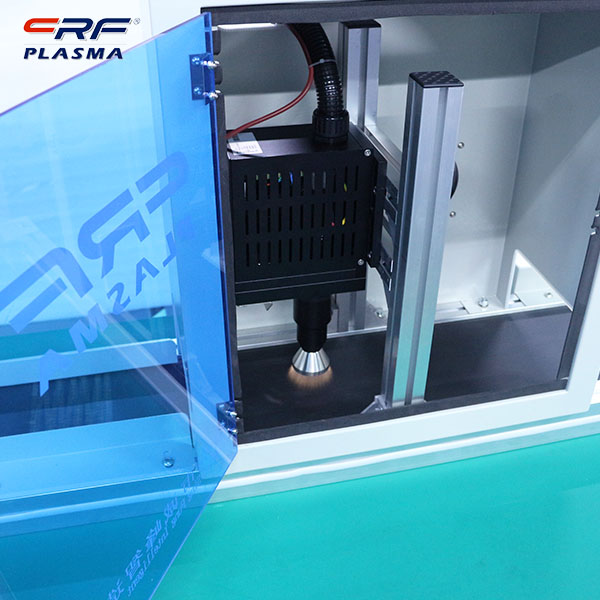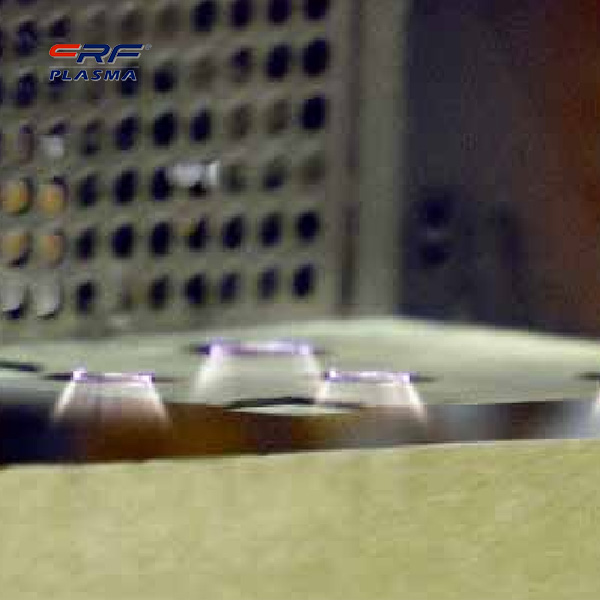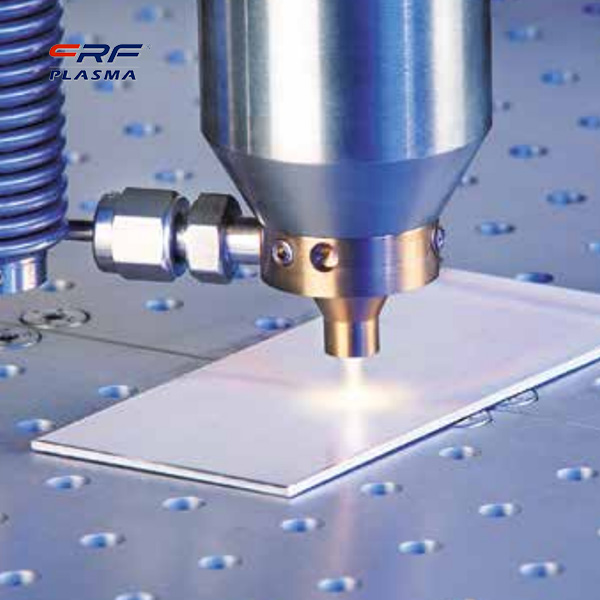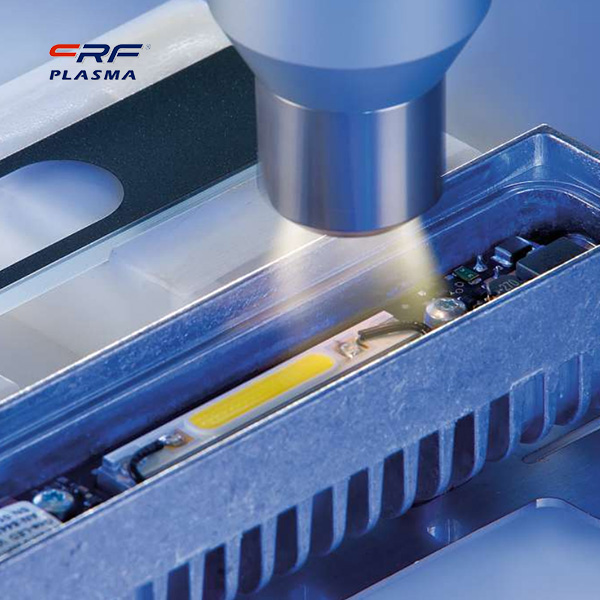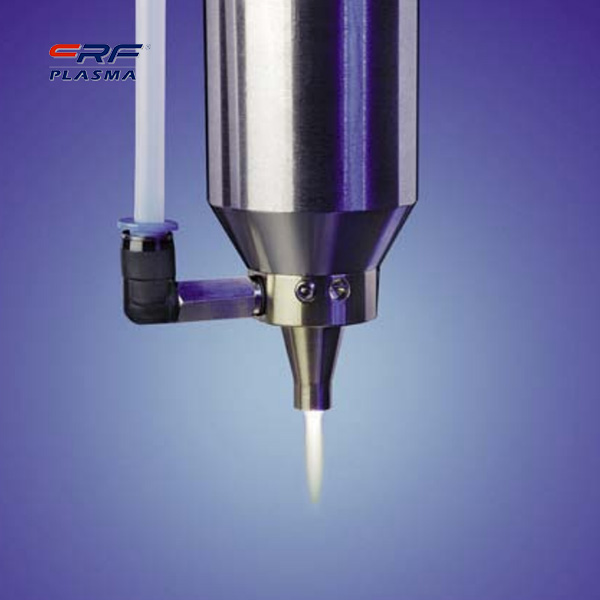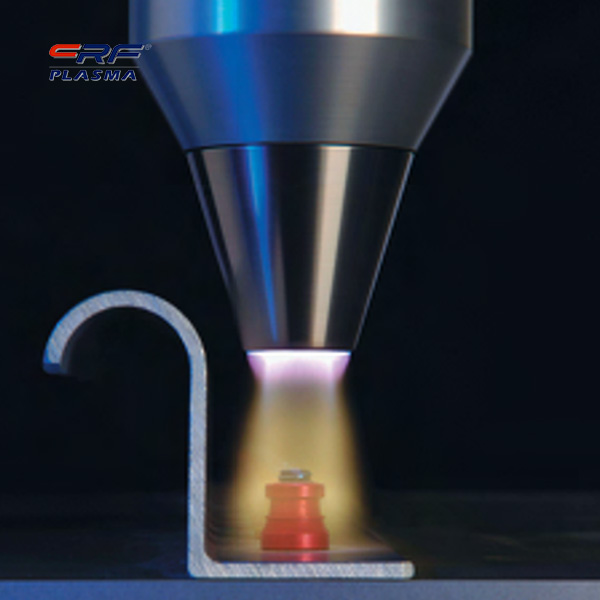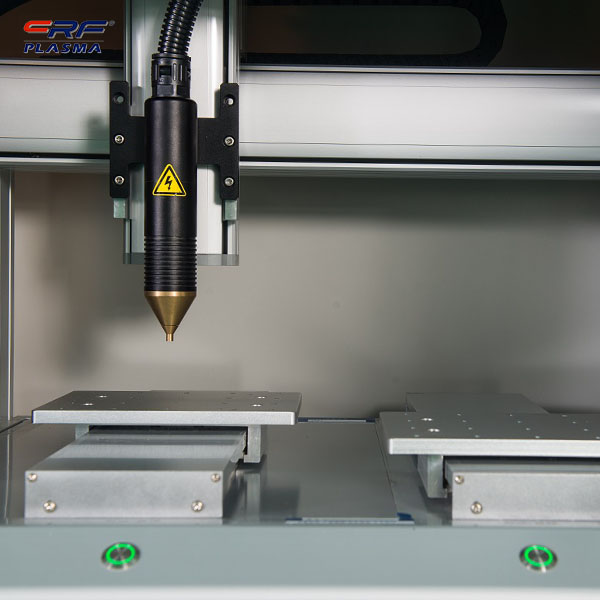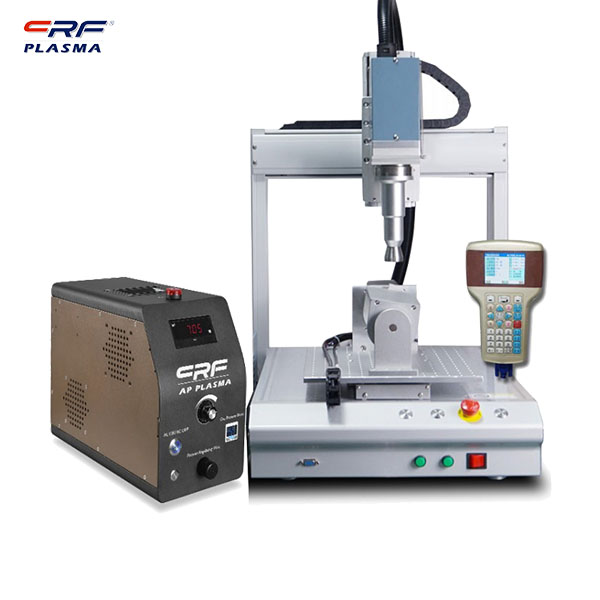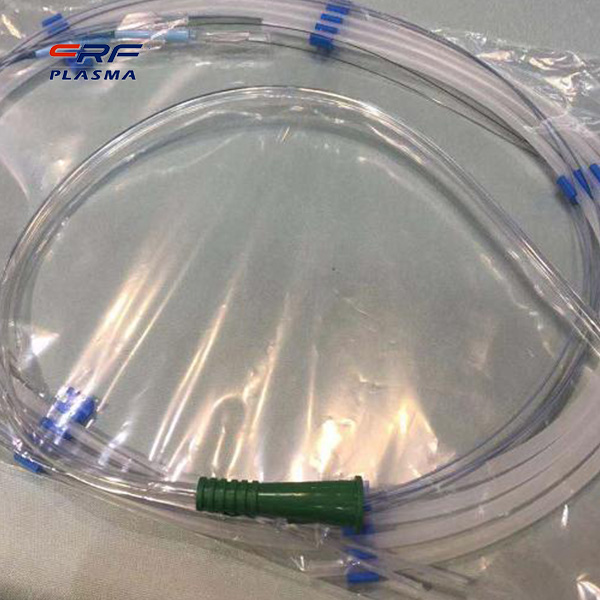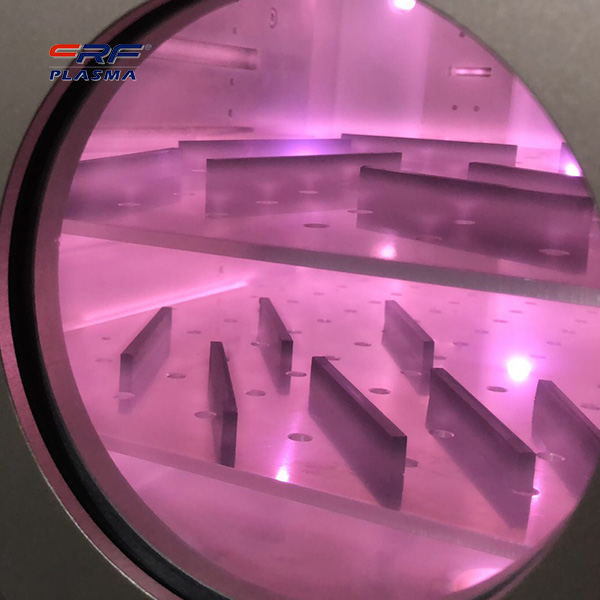
Welcome to Shenzhen Sing Fung Intelligent Manufacturing Co., Ltd.
E-mail:shaobo@sfi-crf.com
On-line plasma cleaning equipment NH3 plasma characteristics and surface modification PAN ultrafiltration membrane
- Categories:Technical Support
- Author:Plasma cleaning machine-CRF plasma plasma equipment-plasma surface treatment machine manufacturer-chengfeng intelligent manufacturing
- Origin:
- Time of issue:2021-11-26
- Views:
(Summary description)On-line plasma cleaning equipment NH3 plasma characteristics and surface modification PAN ultrafiltration membrane: Polyacrylonitrile (PAN) is widely used in the separation and concentration of substances due to its good bacteria resistance, weather resistance and thermal stability. However, because the membrane material itself is hydrophobic, the surface of the PAN ultrafiltration membrane is relatively poorly hydrophilic, and it is easy to adsorb proteins and other macromolecules, resulting in a decrease in membrane flux. Plasma modification of low-temperature online plasma cleaning equipment is an effective way to solve this problem. A variety of polar groups are introduced on the surface of the membrane to improve the hydrophilicity and anti-fouling ability of the membrane. Using plasma surface modification of polypropylene microporous membrane, the contact angle is reduced from 100° of the original membrane to 40°, and the hydrophilicity is significantly improved. Plasma surface modified thin film composite membrane (TFC), after modification, the hydrophilicity of the membrane surface is improved, and the anti-fouling ability is significantly increased. When low-temperature plasma acts on the surface of the material, a series of complex physical and chemical processes are generated. Therefore, understanding the characteristics and characteristic parameters of plasma discharge is of great significance to the application of plasma technology in material modification. Using online plasma cleaning equipment NH3 plasma surface modification of PAN ultrafiltration membrane, with the increase of discharge power, the contact angle decreases, with the increase of power, the free radical reaction initiated on the membrane surface is more fully generated, The increase in the amount of polar groups increases the hydrophilicity of the membrane surface. The treatment time is appropriately increased, and the free electrons in the plasma gain kinetic energy, which accelerates the collision with the macromolecular chains on the surface of the membrane, attracts more polar groups, and significantly improves the hydrophilicity. The flux test of the original membrane and plasma modified membrane samples on the PAN ultrafiltration membrane shows that the flux is significantly increased compared with the original membrane, the hydrophilicity of the ultrafiltration membrane surface is significantly improved, and protein molecules are not easy to adhere to the membrane surface. Anti-pollution performance and penetration performance are also further improved. Although plasma modification changes the surface structure of the membrane, the etching effect is not obvious. After modification, the pore size of the membrane is reduced, which has a good interception effect on protein molecules larger than the pore size of the membrane. After the plasma modification of the low-temperature online plasma cleaning equipment, the flux decay rate of the polyacrylonitrile ultrafiltration membrane is reduced from 68% of the original membrane to 43%, because the plasma can trigger the radical reaction on the surface of the ultrafiltration membrane. Hydrophilic groups such as carbonyl group (C=O) and carboxyl group (-COOH) are generated, which can combine with surrounding water molecules to form a hydrophilic interface and reduce the deposition of protein on the membrane surface. Therefore, the decrease in flux attenuation rate indicates Plasma modification improves the anti-fouling ability of ultrafiltration membranes.
On-line plasma cleaning equipment NH3 plasma characteristics and surface modification PAN ultrafiltration membrane
(Summary description)On-line plasma cleaning equipment NH3 plasma characteristics and surface modification PAN ultrafiltration membrane:
Polyacrylonitrile (PAN) is widely used in the separation and concentration of substances due to its good bacteria resistance, weather resistance and thermal stability. However, because the membrane material itself is hydrophobic, the surface of the PAN ultrafiltration membrane is relatively poorly hydrophilic, and it is easy to adsorb proteins and other macromolecules, resulting in a decrease in membrane flux.
Plasma modification of low-temperature online plasma cleaning equipment is an effective way to solve this problem. A variety of polar groups are introduced on the surface of the membrane to improve the hydrophilicity and anti-fouling ability of the membrane. Using plasma surface modification of polypropylene microporous membrane, the contact angle is reduced from 100° of the original membrane to 40°, and the hydrophilicity is significantly improved. Plasma surface modified thin film composite membrane (TFC), after modification, the hydrophilicity of the membrane surface is improved, and the anti-fouling ability is significantly increased.
When low-temperature plasma acts on the surface of the material, a series of complex physical and chemical processes are generated. Therefore, understanding the characteristics and characteristic parameters of plasma discharge is of great significance to the application of plasma technology in material modification.
Using online plasma cleaning equipment NH3 plasma surface modification of PAN ultrafiltration membrane, with the increase of discharge power, the contact angle decreases, with the increase of power, the free radical reaction initiated on the membrane surface is more fully generated, The increase in the amount of polar groups increases the hydrophilicity of the membrane surface. The treatment time is appropriately increased, and the free electrons in the plasma gain kinetic energy, which accelerates the collision with the macromolecular chains on the surface of the membrane, attracts more polar groups, and significantly improves the hydrophilicity.
The flux test of the original membrane and plasma modified membrane samples on the PAN ultrafiltration membrane shows that the flux is significantly increased compared with the original membrane, the hydrophilicity of the ultrafiltration membrane surface is significantly improved, and protein molecules are not easy to adhere to the membrane surface. Anti-pollution performance and penetration performance are also further improved. Although plasma modification changes the surface structure of the membrane, the etching effect is not obvious. After modification, the pore size of the membrane is reduced, which has a good interception effect on protein molecules larger than the pore size of the membrane.
After the plasma modification of the low-temperature online plasma cleaning equipment, the flux decay rate of the polyacrylonitrile ultrafiltration membrane is reduced from 68% of the original membrane to 43%, because the plasma can trigger the radical reaction on the surface of the ultrafiltration membrane. Hydrophilic groups such as carbonyl group (C=O) and carboxyl group (-COOH) are generated, which can combine with surrounding water molecules to form a hydrophilic interface and reduce the deposition of protein on the membrane surface. Therefore, the decrease in flux attenuation rate indicates Plasma modification improves the anti-fouling ability of ultrafiltration membranes.
- Categories:Technical Support
- Author:Plasma cleaning machine-CRF plasma plasma equipment-plasma surface treatment machine manufacturer-chengfeng intelligent manufacturing
- Origin:
- Time of issue:2021-11-26 21:58
- Views:
On-line plasma cleaning equipment NH3 plasma characteristics and surface modification PAN ultrafiltration membrane:
Polyacrylonitrile (PAN) is widely used in the separation and concentration of substances due to its good bacteria resistance, weather resistance and thermal stability. However, because the membrane material itself is hydrophobic, the surface of the PAN ultrafiltration membrane is relatively poorly hydrophilic, and it is easy to adsorb proteins and other macromolecules, resulting in a decrease in membrane flux.
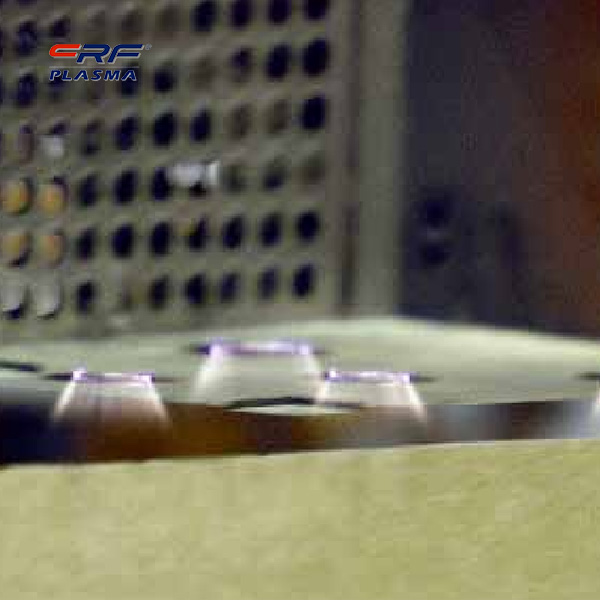 Plasma modification of low-temperature online plasma cleaning equipment is an effective way to solve this problem. A variety of polar groups are introduced on the surface of the membrane to improve the hydrophilicity and anti-fouling ability of the membrane. Using plasma surface modification of polypropylene microporous membrane, the contact angle is reduced from 100° of the original membrane to 40°, and the hydrophilicity is significantly improved. Plasma surface modified thin film composite membrane (TFC), after modification, the hydrophilicity of the membrane surface is improved, and the anti-fouling ability is significantly increased.
Plasma modification of low-temperature online plasma cleaning equipment is an effective way to solve this problem. A variety of polar groups are introduced on the surface of the membrane to improve the hydrophilicity and anti-fouling ability of the membrane. Using plasma surface modification of polypropylene microporous membrane, the contact angle is reduced from 100° of the original membrane to 40°, and the hydrophilicity is significantly improved. Plasma surface modified thin film composite membrane (TFC), after modification, the hydrophilicity of the membrane surface is improved, and the anti-fouling ability is significantly increased.
When low-temperature plasma acts on the surface of the material, a series of complex physical and chemical processes are generated. Therefore, understanding the characteristics and characteristic parameters of plasma discharge is of great significance to the application of plasma technology in material modification.
Using online plasma cleaning equipment NH3 plasma surface modification of PAN ultrafiltration membrane, with the increase of discharge power, the contact angle decreases, with the increase of power, the free radical reaction initiated on the membrane surface is more fully generated, The increase in the amount of polar groups increases the hydrophilicity of the membrane surface. The treatment time is appropriately increased, and the free electrons in the plasma gain kinetic energy, which accelerates the collision with the macromolecular chains on the surface of the membrane, attracts more polar groups, and significantly improves the hydrophilicity.
The flux test of the original membrane and plasma modified membrane samples on the PAN ultrafiltration membrane shows that the flux is significantly increased compared with the original membrane, the hydrophilicity of the ultrafiltration membrane surface is significantly improved, and protein molecules are not easy to adhere to the membrane surface. Anti-pollution performance and penetration performance are also further improved. Although plasma modification changes the surface structure of the membrane, the etching effect is not obvious. After modification, the pore size of the membrane is reduced, which has a good interception effect on protein molecules larger than the pore size of the membrane.
After the plasma modification of the low-temperature online plasma cleaning equipment, the flux decay rate of the polyacrylonitrile ultrafiltration membrane is reduced from 68% of the original membrane to 43%, because the plasma can trigger the radical reaction on the surface of the ultrafiltration membrane. Hydrophilic groups such as carbonyl group (C=O) and carboxyl group (-COOH) are generated, which can combine with surrounding water molecules to form a hydrophilic interface and reduce the deposition of protein on the membrane surface. Therefore, the decrease in flux attenuation rate indicates Plasma modification improves the anti-fouling ability of ultrafiltration membranes.
Scan the QR code to read on your phone

TEL:0755-3367 3020 / 0755-3367 3019

E-mail:sales-sfi@sfi-crf.com

ADD:Mabao Industrial Zone, Huangpu, Baoan District, Shenzhen




